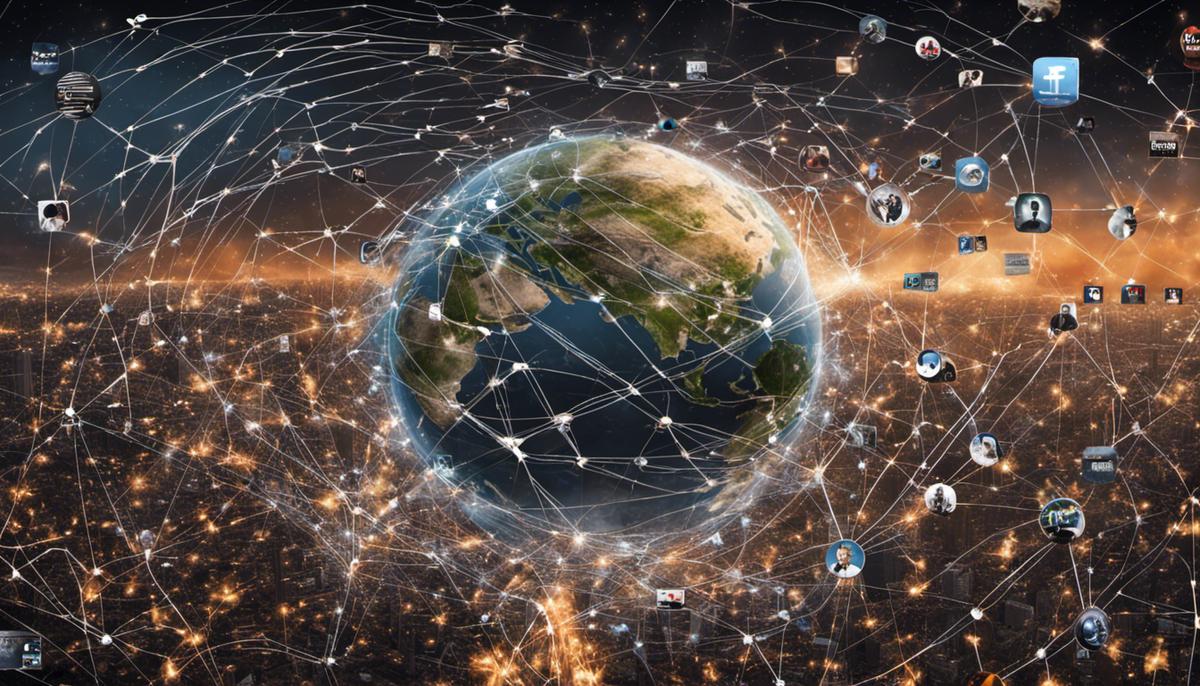Living in the age of information, the value of truth and clarity in communication has never been more vital. An aspect often overlooked, however, is the devious cousin of information – disinformation. The ability of disinformation to manipulate public perception, and consequently sway democratic processes such as elections, poses a significant threat to societies across the globe. This exploration seeks to delve into the depths of this disturbing phenomenon; from understanding the concept, recognizing its devastating impacts on elections, unraveling notable historical instances, and envisaging remedy strategies and countermeasures. By shining a light on this dark ally of manipulation, we aim to create an understanding that can pave the way to effective resistance.
Table of Contents
Understanding Disinformation
Disinformation: An Examination of its Constitution, Creation, and Circulation
Disinformation is a pervasive and consequential phenomenon in the 21st century. Rooted predilely in the field of cognitive science and information technology, it is characterized as intentionally false or misleading information disseminated, often, with malicious intent. This phenomenon constitutes a severe challenge to contemporary society owing to its substantial influence on public opinion, policy-making and the democratic process. The study of disinformation, thus, forms an essential cornerstone to preserve the integrity of information ecology.
Crucially, understanding disinformation requires discerning between misinformation and disinformation. While misinformation refers to unintentionally false information, disinformation is deliberately cultivated and disseminated with the wilful intent to deceive.
The creation of disinformation involves manipulating factual information by fabricating, omitting, or distorting elements. Efficacy largely hinges upon leveraging cognitive biases. One method often deployed is the use of ‘information cascades’, wherein once an individual observes a plethora of others accepting a certain belief or action, they too are inclined to adopt the same. This capitalizes on the bandwagon effect and fosters a ripe environment for false information to thrive.
Moreover, escalating advances in digital technology propound the rise of disinformation. The advent of ‘deepfakes’—highly realistic synthetic media manipulated by artificial intelligence—is of escalating concern. This technology can be used to create incredibly realistic, yet utterly fallacious representations of events or individuals, thereby feeding disinformation into public consciousness.
Spread of disinformation bears parallels to disease spread in its infectious nature. Social media platforms serve as potent vectors because of their wide reach and potential to virally disperse information. The echo chamber effect observed on these platforms magnifies the spread—the algorithmic design forming a feedback loop that predominantly presents affirming views, thus reinforcing and increasingly polarizing beliefs.
Further, human psychology plays a significant role. The so-called ‘illusory truth effect’ precitates when false information, repeated often enough, begins to be perceived as true. Cognitive shortcuts, heuristics, and biases often result in a susceptibility to fake news, and therefore, form key factors in its propagation.
Institutionally, state actors have increasingly engaged in disinformation campaigns to advance geopolitical agendas. These campaigns, imbued with strategic narratives aimed at shaping perceptions and behaviors, exacerbate the destructive potentials of disinformation on a global scale.
In conclusion, science and society, in a synergy, must devote collaborative action towards mitigating the profound impacts of disinformation. As stewards of knowledge, it then becomes our duty, both individually and collectively, to fortify our information ecology against the onslaught of disinformation. Rigorous fact-checking, digital literacy, psychological awareness, and technological safeguards constitute instrumental lines of defense against these pernicious information pathogens. It is through this comprehensive understanding, vigilance, and action that integrity in the pursuit of truth must be resolutely upheld.

Disinformation and Elections: Cause and Effect
An in-depth exploration of disinformation necessitates an examination of its ramifications. Pertinently, attention must be drawn into how disinformation sways political landscapes – notably influencing voter behavior and shaping political campaigns. Delving into this area offers lens to assess the intricate and multifaceted applications of disinformation.
Dating back to the times of the Roman Republic, political figures like Mark Antony deployed disinformation tactics to undermine opponents and manipulate public sentiment. A revelation that echoes across the corridors of history; disinformation often pivots the rudder of electoral outcomes, as it significantly alters voter behavior. Consider the United States presidential election of 1800, where disinformation whirled within the electorate, leading to much unrest and confusion about the candidates, thereby affecting the voting results.
Moving into the 20th century, disinformation further evolved with the advent of mass communication. The potency of these tactics became starkly apparent during the Cold War, with both the Eastern and Western Bloc engaging in extensive disinformation campaigns. By manipulating political rhetoric and discourse, they endeavored to influence public opinion, demonstrating the reach and impact of disinformation on political landscapes.
Moreover, disinformation often erodes public trust in political systems. The Watergate scandal, involving the cover-up of information by the Nixon administration, incurred substantial public perception damage. In the aftermath of this event, faith in the political system plummeted, highlighting the long-term ramifications disinformation can trigger.
Presently, the dynamics of disinformation have evolved dramatically with the inception of the digital era. Online platforms have become potent conduits for disinformation. The profitability of viral content, irrespective of its veracity, bolsters the spread of disinformation, massively compounded by the echo-chamber effect of these online arenas.
Central to this, cognitive biases play a pivotal role in the process. The confirmation bias, for instance, leads individuals to seek or interpret information that affirms their pre-existing beliefs, inadvertently propagating disinformation.
Combatting disinformation is a daunting task, demanding a myriad of strategies and the participation of numerous stakeholders. The inoculation theory, grounded in psychological research, proposes the exposure to weakened forms of a misleading argument to confer resistance against disinformation. This emphasizes the importance of harnessing the scholarship from diverse fields.
Regulation plays a significant part in this fight against disinformation. Polity must establish and enforce policies to curb the propensity of disinformation spread online, where much of the electorate procures political news. Moreover, the digital platforms ought to demonstrate corporate social responsibility by instituting safeguards against disinformation amplification.
Finally, in this battle against disinformation, the society must revere the value of truth, fostering a culture that prizes accuracy over sensationalism. Education must emphasize critical-thinking capabilities, ensuring individuals possess the aptitude to differentiate between verified information and disinformation.
In conclusion, history paints a detailed tableau of the various ways disinformation has sculpted political landscapes, influenced voter behavior, manipulated political discourse, and eroded trust in political systems. Steering towards a future where disinformation is rendered powerless, necessitates a comprehensive understanding of the past, integrating strategies and regulations, and championing the culture of truth and accuracy.

Historical Instances and Case Studies
Shining a Light on History: Disinformation’s Role in Elections
Historical analysis often launches the quest for understanding, providing context to the complexities of modern phenomena. In the sphere of political science, closely inspecting historical instances of disinformation deepens comprehension of its current impact on elections. Historical examples elucidating the role of disinformation in political processes serve as the cornerstone for insight into the weight of this endemic issue.
Dating back to the times of the Roman Republic, political figures like Mark Antony deployed disinformation tactics to undermine opponents and manipulate public sentiment. A revelation that echoes across the corridors of history; disinformation often pivots the rudder of electoral outcomes, as it significantly alters voter behavior. Consider the United States presidential election of 1800, where disinformation whirled within the electorate, leading to much unrest and confusion about the candidates, thereby affecting the voting results.
Moving into the 20th century, disinformation further evolved with the advent of mass communication. The potency of these tactics became starkly apparent during the Cold War, with both the Eastern and Western Bloc engaging in extensive disinformation campaigns. By manipulating political rhetoric and discourse, they endeavored to influence public opinion, demonstrating the reach and impact of disinformation on political landscapes.
Moreover, disinformation often erodes public trust in political systems. The Watergate scandal, involving the cover-up of information by the Nixon administration, incurred substantial public perception damage. In the aftermath of this event, faith in the political system plummeted, highlighting the long-term ramifications disinformation can trigger.
Presently, the dynamics of disinformation have evolved dramatically with the inception of the digital era. Online platforms have become potent conduits for disinformation. The profitability of viral content, irrespective of its veracity, bolsters the spread of disinformation, massively compounded by the echo-chamber effect of these online arenas.
Central to this, cognitive biases play a pivotal role in the process. The confirmation bias, for instance, leads individuals to seek or interpret information that affirms their pre-existing beliefs, inadvertently propagating disinformation.
Combatting disinformation is a daunting task, demanding a myriad of strategies and the participation of numerous stakeholders. The inoculation theory, grounded in psychological research, proposes the exposure to weakened forms of a misleading argument to confer resistance against disinformation. This emphasizes the importance of harnessing the scholarship from diverse fields.
Regulation plays a significant part in this fight against disinformation. Polity must establish and enforce policies to curb the propensity of disinformation spread online, where much of the electorate procures political news. Moreover, the digital platforms ought to demonstrate corporate social responsibility by instituting safeguards against disinformation amplification.
Finally, in this battle against disinformation, the society must revere the value of truth, fostering a culture that prizes accuracy over sensationalism. Education must emphasize critical-thinking capabilities, ensuring individuals possess the aptitude to differentiate between verified information and disinformation.
In conclusion, history paints a detailed tableau of the various ways disinformation has sculpted political landscapes, influenced voter behavior, manipulated political discourse, and eroded trust in political systems. Steering towards a future where disinformation is rendered powerless, necessitates a comprehensive understanding of the past, integrating strategies and regulations, and championing the culture of truth and accuracy.

Strategies for Combating Disinformation
As an examination of the strategies for battling disinformation during election cycles continues, the importance of analysing the role of disinformation in the historical context must be recognized. There is no new occurrence of this scourge; disinformation has been a part of the larger political game for centuries. Indeed, leaflets, newspapers, and speeches were applied in the manipulative game of moulding public opinion long before our digital age.
However, the rise of mass communication, particularly the internet era, has fundamentally changed the way disinformation operates. As with any cataclysmic shift, it is vital to fully understand these changes in order to formulate effective counter strategies. The advent of digital technology has turbocharged disinformation, leading to its global proliferation. It is the scope, the speed, and the small cost to the propagator of disinformation that present unique challenges in the current epoch.
Our trust in political systems is vastly influenced by information received, processed, and understood. Notwithstanding, the surge of disinformation is eroding this trust. By distorting the political discourse, disinformation contributes to undermining democratic institutions and processes. It creates fissures between political entities and their electorates, leading to harmful polarization, and often promotes damaging, reactionary policies.
Undeniably, online platforms are a major conduit for the spread of disinformation. The algorithms of social media platforms tend to prioritize content that generate engagement, giving rise to a skewed information environment. Additionally, these platforms also offer the shield of anonymity, making it conducive for malicious actors to disseminate disinformation with little risk of retribution.
Cognitive biases further exacerbate the issue. People are naturally drawn to information that confirms their pre-existing beliefs and ideologies—a phenomenon called confirmation bias. This, in combination with the velocity and vast presence of disinformation, often leads to a distorted understanding of reality and fuels resentment towards target groups or viewpoints.
Though the challenge is immense, it is not insurmountable. To combat disinformation, a robust approach involving only the most effective strategies would be necessary. Inoculation theory, for example, is one useful strategy. It follows the medical immunization analogy, suggesting that people can be ‘inoculated’ against disinformation by exposure to weakened forms of the misinformation that promote resistance to later, potent forms of it. This could involve critical thinking training and the promotion of media literacy—teaching people how to actively evaluate and discern the reliability and credibility of the information they encounter.
Although there might be some promising approaches, it should be acknowledged that a multidisciplinary collaboration is needed to effectively thwart disinformation. A joint effort that encompasses academia, media, technology companies, civil society, and government regulation is crucial.
Notably, the role of government regulation is important in mitigating disinformation. Governments can ensure responsible behaviour by imposing fines or sanctions for proven dissemination of disinformation, support research into better understanding and counteracting disinformation, and setup specific bodies dedicated to combat the issue.
Last but certainly not least, there is a great need for society to nurture a culture that respects truth and accuracy. A democratized information environment is possible only when consumers of information value accuracy over sensation, process over speed, and integrity over intrigue.
In the end, the battle against disinformation is as much about modifying individual susceptibility and response as it is about mitigating the systemic aspects that permit its spread. It is a complex issue involving technological, psychological, societal, and political dimensions. As in any widespread, complex problem, the solution too must be broad, versatile, and effectively implemented to ensure the safeguarding of our democratic processes and institutions.

The journey through the labyrinthine phenomenon of disinformation and its effects on elections reiterates the integral necessity of truth in democratic processes. As explored, disinformation not only manipulates voters’ perspectives, but also fundamentally destabilizes faith in democratic institutions. Historic examples and case studies convey the potency of this mechanism, underlining an urgent call for action. Building resilience against disinformation is a layered task; calling for collaborative initiatives from both governments and private sectors, and on individual levels, encouraging the development of critical thinking and media literacy among electorates. The power to course-correct lies in shared understanding, continued vigilance and proactive measures to mitigate this ever-evolving challenge.

Matt Smith is a seasoned journalist and author whose expertise spans across the dynamic realms of Politics, Gadgets, Gaming, and a plethora of general interest topics. With a Master’s in Political science and tech pedigree shaped in Silicon Valley, Matt brings a wealth of knowledge and a critical eye to everything he writes.
Politics: Matt offers sharp political commentary, drawing from his experience as a political analyst and his academic rigor.
Gadgets: His tech insights are grounded in real-world experience, having been on the front lines of innovation with a degree from Caltech.
Gaming: A respected voice in gaming, Matt’s reviews and trend analyses are a testament to his deep involvement in the gaming community.
General Topics: From science to culture, Matt’s writing spans a broad spectrum, engaging readers with a blend of expertise and relatable prose.
Engage with Matt’s compelling content for a fresh perspective on the issues at the forefront of today’s discourse.

